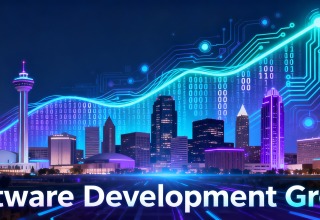In most industries, there’s a rising trend of sustainability. Executives and leaders are much more interested in operating efficiently and sustainably, thanks to a variety of convergent pressures. New laws and regulations are reshaping the landscape, favoring more sustainability.
Public pressure from consumers is beginning to favor businesses that are more sustainable. Competitive pressure is icing on the cake, with the vast majority of big businesses now publishing annual sustainability reports.
The video game industry is no exception to this trend. How exactly is the video game industry beginning to go green?
Greener Buildings and Workplaces
First, video game companies are investing in greener buildings and greener workplaces overall.
There are many ways to make a building greener, says LosAngelesPropertyManagementGroup.com. You can condense your working space to occupy a smaller footprint. You can invest in more efficient machines and use smart controls to prevent your building from using too much energy on unnecessary or wasteful tasks. You can also invest in energy efficiency with superior HVAC systems and better insulation.
Even better, you can adapt your game development studio to be partially or fully remote. While there are definitely advantages to having a centralized workplace where all your employees can meet and collaborate, there’s no question that working remotely is more sustainable than working in a centralized office building in most cases. Even if employees only work from home one day a week, that’s still a significant reduction in carbon emissions from the daily commute.
In addition to changing office buildings and general schedules, video game industry employers are beginning to incorporate sustainability and efficiency into their core values. They’re encouraging employees to operate in more sustainable ways, both in their professional and personal lives. They’re hiring people who have expertise in sustainability leadership. And they’re rethinking daily responsibilities and office operations with sustainability in mind.
As a result, many video game developers and related companies can now brag about having more sustainable infrastructure and internal processes. This makes them more attractive to consumers and more likely to attract investment dollars.
Supply Chain Operations
Video game companies are also engaging with their supply chains to reduce emissions and improve sustainability generally, says Time. Video game developers themselves are usually software developers, using little more than a computer and an internet connection to do their work. Hardware developers, distributors, and manufacturers have far more considerations when it comes to sustainability.
Much depends on the types of components you include in your hardware and how you source them. In the video game world, components like GPUs and CPUs are critically important, but they come with some important drawbacks. For example, they tend to use a lot of energy, and they tend to be manufactured from raw materials that are rare and difficult to mine without causing environmental impact.
At every node in the supply chain, there are decisions to make regarding sustainability and environmental impact. Companies in the video game industry are increasingly paying attention to these decisions, vetting suppliers, and digging into the details to ensure a minimal impact.
Games and Computer Performance
Developers can also improve sustainability by focusing on the games themselves, according to Earth.org. We don’t think of playing a video game as an exorbitantly resource intensive operation. The reality is computers and video game consoles are capable of using lots of electricity, and with millions of people playing video games regularly, that impact can be huge.
Even small forms of optimization can make a dent in the total amount of energy utilized in this industry. For example, lowering the resolution when it isn’t strictly necessary or capping the frame rate can greatly reduce the amount of power used by computers all around the world. As an added bonus, these tiny optimizations usually allow the game to run better, resulting in improved experiences for gamers in addition to reducing negative environmental impact.
Messaging and Themes
Some developers are also incorporating their sustainability goals and environmental objectives into the story, art, and themes of the video games they create. Many video games now feature lush natural environments and themes about efficiency and protection – or harsh dystopian landscapes that arose only as a result of unsustainable and unethical societal practices. It’s a way of engaging with the video game community indirectly about these goals and values.
Sustainability and environmental protection are likely to become even more popular and powerful in the video game industry. Consumers are increasingly prioritizing working with businesses and organizations who consciously consider and try to control their impact. On top of that, there are tons of rivals and competitors in the video game industry already focusing on sustainability. It’s only a matter of time before efficiency and sustainability become the default in this niche.






















